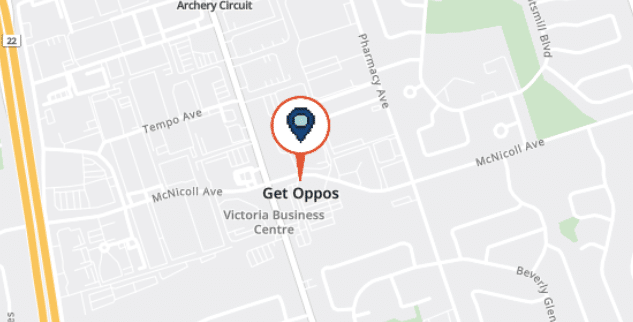Conducting a SOC 2 gap assessment is crucial for organizations seeking to demonstrate their commitment to security and privacy controls. SOC 2 gap assessments help identify areas of non-compliance and highlight gaps in implementing the required controls. It is a complex process that requires careful planning and execution to ensure the accuracy and reliability of the assessment results.
This article provides a proven approach to conducting a thorough SOC 2 gap assessment, ensuring that organizations can easily address any deficiencies and achieve SOC 2 compliance. Read on to learn more about the key steps involved in this assessment process.

The Anatomy of a SOC 2 Gap Assessment
A SOC 2 gap assessment is critical in ensuring that your organization complies with the Trust Services Criteria established by the American Institute of CPAs (AICPA). This assessment helps you identify gaps or deficiencies in your security controls and processes and provides actionable insights to address those gaps.
The first step in conducting a SOC 2 gap assessment is to define the scope of the assessment. This involves identifying the specific systems, processes, and controls that will be included in the assessment. This is important because it allows you to focus your efforts on the most critical areas of your organization.
Once the scope is defined, the next step is to gather evidence and documentation related to your security controls. This includes policies, procedures, and other supporting documentation demonstrating your organization’s adherence to the Trust Services Criteria. Gathering comprehensive and accurate documentation is important to ensure a thorough assessment.
After gathering the necessary documentation, the next step is to perform a gap analysis. This involves comparing your current controls and processes against the requirements of the Trust Services Criteria. During this analysis, any gaps or deficiencies in your controls will be identified, and each gap’s severity and potential impact will be assessed.
Once the gaps are identified, developing a remediation plan is next. This plan outlines the specific actions that need to be taken to address each identified gap. The remediation plan should include a timeline for completion, assigned responsibilities, and any necessary resources or budget requirements.
After developing the remediation plan, the next step is implementing the necessary changes and improvements to address the identified gaps. This may involve updating policies and procedures, implementing new security controls, or improving existing processes. Throughout this phase, ongoing monitoring and validation of the implemented changes are essential to ensure their effectiveness.
Finally, after implementing the necessary changes, a final assessment is conducted to determine if the identified gaps have been effectively addressed. This assessment may involve retesting controls, reviewing updated policies and procedures, and conducting interviews with key personnel. The goal of the final assessment is to ensure that the necessary improvements have been made and the organization complies with the Trust Services Criteria.
In conclusion, a SOC 2 gap assessment is a systematic process that helps organizations identify and address any gaps or deficiencies in their security controls and processes. By following the steps outlined above, organizations can ensure they take the necessary measures to protect their data and demonstrate their commitment to security and compliance.
The Difference Between SOC and SOX Compliance
Preparing for a SOC 2 Gap Assessment: Step-by-Step Guide
A SOC 2 Gap Assessment is an important step for organizations looking to achieve SOC 2 compliance. This assessment helps identify any gaps or deficiencies in an organization’s controls and policies, allowing them to address and remediate these issues before undergoing a formal SOC 2 audit.
To help you prepare for a SOC 2 Gap Assessment, we have put together a step-by-step guide that outlines the key stages of the process. Keep in mind that each organization’s assessment will vary based on their unique circumstances, so it’s important to tailor these steps to fit your specific needs.
- Define the Scope: Start by clearly defining the scope of your assessment. This includes identifying the systems, processes, and controls that will be included in the assessment.
- Select a Qualified Assessor: Choose a qualified assessor who has experience in conducting SOC 2 assessments. They will guide you through the process, provide expertise, and ensure compliance with SOC 2 standards.
- Conduct a Readiness Assessment: Before diving into the actual gap assessment, it may be helpful to conduct a readiness assessment. This will help identify any potential gaps or areas of concern so that you can address them proactively.
- Identify Control Objectives: Identify the control objectives that are relevant to your organization’s specific industry and operations. These control objectives will serve as the basis for evaluating your controls against the SOC 2 criteria.
- Engage with Management: Lastly, engage with management before and throughout the assessment process. Their support will be key in implementing the changes necessary to reach SOC 2 compliance so engage with them early, keep them informed of progress, seek their input on key decisions, and ensure they are supportive of the remediation efforts.
By following these steps, you can effectively prepare for a SOC 2 Gap Assessment and increase your chances of achieving SOC 2 compliance.
Turning Gaps into Opportunities: A Strategic Plan
When it comes to SOC 2 compliance, identifying and addressing gaps in your organization’s security controls is crucial. However, instead of viewing these gaps as obstacles, it’s important to see them as opportunities for growth and improvement. By taking a strategic approach, you can turn these gaps into opportunities to enhance your security posture and demonstrate your commitment to protecting your clients’ data.
The first step in the process is to conduct a comprehensive assessment to identify any weaknesses or deficiencies in your current security controls. This can be done through a combination of internal audits and external assessments. Once the gaps have been identified, it’s important to prioritize them based on their potential impact on your business and the level of risk they pose.
Once the gaps have been prioritized, you can develop a strategic plan to address them. This plan should include clear goals, objectives, and timelines for implementation. Engaging key stakeholders from across your organization in this process is important to ensure buy-in and support throughout the organization.
When developing your plan, it’s important to consider all aspects of your security program, including policies and procedures, technology infrastructure, employee training and awareness, and incident response. Each gap should be addressed with a specific action plan that outlines the steps needed to remediate the deficiency.
In some cases, addressing the gaps may require investing in new technology solutions or engaging third-party providers to assist with remediation efforts. It’s important to carefully evaluate these options to ensure they align with your organization’s goals and budget.
Throughout the implementation process, it’s important to regularly monitor and assess your progress to ensure the gaps are effectively addressed. This may involve conducting regular audits and assessments, engaging independent third-party auditors, or leveraging automated tools to monitor your security controls continuously.
Finally, it’s important to communicate your efforts and progress to your clients and stakeholders. This can be done through regular updates, reports, and certifications to demonstrate your commitment to security and compliance.
By taking a strategic approach and viewing SOC 2 gaps as opportunities for improvement, you can enhance your security posture, build trust with your clients, and differentiate yourself in the marketplace. With careful planning and execution, turning SOC 2 gaps into opportunities can be a key driver of growth and success for your organization.
The Ultimate SOC 2 Controls List
BCON is a network intrusion detection system developed by Oppos. It monitors network traffic, identifies suspicious activity through network behaviour analysis and entity behaviour analytics, and promptly alerts you, thereby enhancing your system security.
BCON leverages advanced techniques like stateful protocol analysis and intrusion prevention system. These technologies allow BCON to establish a baseline for normal network traffic and effectively identify deviations or suspicious activity.
Yes, BCON’s sophisticated algorithms minimize false positives. By using signature detection and distinguishing between incorrectly configured proxy servers and genuine threats, it ensures only genuine alerts are raised.
Absolutely, BCON uses a combination of entity behaviour analytics and statistical anomaly-based detection, enabling it to detect fragmented packets and unusual patterns, thus identifying previously unknown attacks on your network.
BCON is designed to monitor traffic throughout your entire network. This holistic approach ensures comprehensive threat detection and robust network security.
How Oppos Can Help in Your SOC 2 Journey
Oppos Cybersecurity Consultants are dedicated to helping companies navigate the complex process of achieving SOC 2 compliance. As experts in the field, we understand the importance of data security and the need for companies to demonstrate their commitment to protecting sensitive information.
When it comes to SOC 2 compliance, many moving parts and requirements can be overwhelming for organizations. That’s where Oppos Consultants comes in. Our team of experienced consultants will guide you through each step of the process, ensuring that your company meets all the necessary criteria and achieves SOC 2 compliance.
We offer a comprehensive range of services to support your SOC 2 journey. This includes gap assessments, where we will evaluate your current security controls and identify any areas of non-compliance. We will then work with your organization to develop and implement the necessary policies, procedures, and controls to meet SOC 2 requirements.
Our consultants will also provide ongoing support and guidance throughout the entire process. We understand that achieving SOC 2 compliance is not a one-time project, but rather an ongoing commitment to data security. Our team will be available to answer any questions, address any concerns, and provide guidance as your organization continues its SOC 2 journey.
By partnering with us, you can rest assured that your company’s data security is in capable hands. Our dedicated team of professionals will work tirelessly to ensure that you achieve SOC 2 compliance and gain your clients’ and stakeholders’ trust and confidence.
Contact us today to learn more about how we can help your organization on its SOC 2 journey. Together, we can create a secure and compliant future for your business.
Conclusion
In summary, conducting a thorough SOC 2 gap assessment is essential for organizations seeking to achieve SOC 2 compliance. This proven approach ensures that all relevant areas are carefully evaluated and any security controls or processes gaps are identified. Organizations can address any weaknesses or deficiencies by engaging in a comprehensive assessment before undergoing the official SOC 2 audit. To understand your organization’s readiness for SOC 2 compliance, we recommend taking the necessary steps to conduct a thorough SOC 2 gap assessment.
Don't wait – secure your data with Oppos' SOC Compliance
SOC 2 Gap Assessment FAQS
A SOC 2 Gap Assessment is a comprehensive evaluation of your organization’s current controls and practices compared to the requirements outlined in the Trust Services Criteria. The assessment is conducted by a qualified professional or a team of experts who have experience in performing SOC 2 audits.
By conducting a SOC 2 Gap Assessment, you gain valuable insights into the areas where your business may fall short of the SOC 2 requirements. This assessment helps you identify vulnerabilities and potential risks, allowing you to take proactive steps to strengthen your security posture. It also provides you with a roadmap for implementing the necessary controls and processes to close these gaps and achieve SOC 2 compliance.
The duration of a SOC 2 Gap Assessment can vary depending on several factors, including the complexity and size of the organization, the number of systems and processes involved, and the level of preparedness before the assessment begins. On average, a SOC 2 Gap Assessment can take anywhere from several weeks to a few months to complete.
During the SOC 2 Gap Assessment process, there are several key steps that you can expect to take place. First, your organization will engage with a qualified auditor who will conduct a thorough evaluation of your current security control environment. The auditor will then compare your current controls against the requirements outlined in the SOC 2 framework. Once the assessment is complete, the auditor will provide you with a gap analysis report. This report will outline any areas where your controls are not meeting the SOC 2 requirements and provide recommendations for remediation.
First and foremost, our consultants have a deep understanding of the SOC 2 framework and its requirements. They will work closely with your organization to conduct a thorough analysis of your current controls and practices, identifying any gaps or deficiencies that may exist.
Once the gaps have been identified, our consultants will guide you through the process of developing and implementing the necessary controls and procedures. They will provide expert advice and recommendations, ensuring that your organization is on the right track toward achieving SOC 2 compliance.
In addition to providing guidance and support, our consultants can also help with the documentation and evidence-collection process. They will assist in the creation and maintenance of all necessary documentation, ensuring that it meets the stringent requirements of the SOC 2 framework.
Furthermore, our consultants will conduct regular progress assessments throughout the remediation process, ensuring that your organization remains on track toward achieving compliance. They will provide timely feedback and guidance, helping you address any issues or challenges that may arise.
Our team will provide the knowledge, guidance, and support you need to successfully navigate the complexities of the SOC 2 framework and achieve your compliance objectives.






